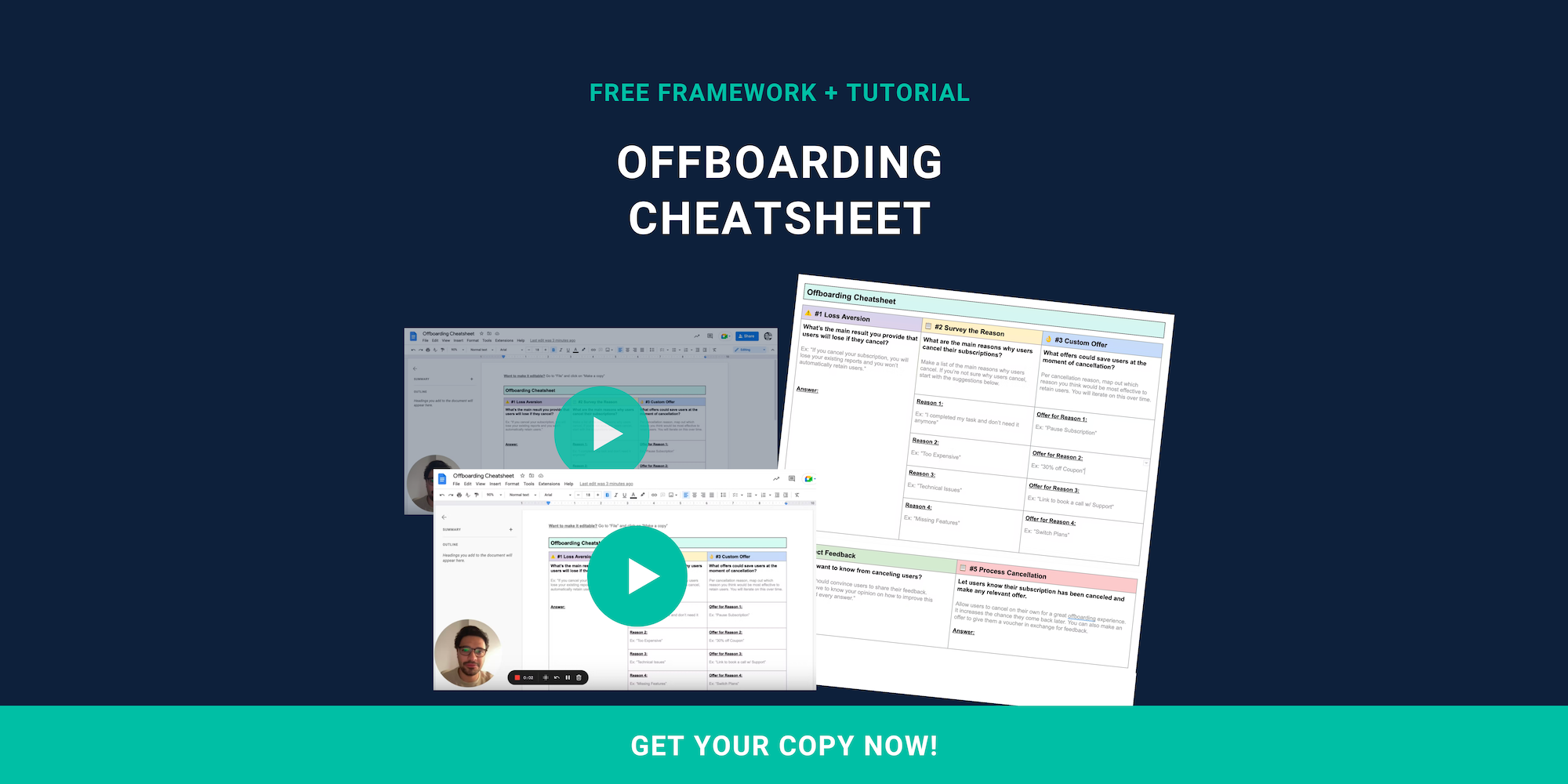Table of Contents
- What Are Subscription Cancellation Laws?
- What Does The California Subscription Cancellation Law Require?
- What About The New York Subscription Cancellation Law?
- What Should You Be Doing To Stay Compliant?
- What Should Your Cancellation Policy Say?
- How Tools Like Raaft Help With Compliance
- Why It Pays To Get This Right
Subscription cancellation laws are something I always keep in mind when thinking about creating a subscription product, as they shape the legal side of the user experience.
It’s all about being clear with customers, keeping things honest, and making sure we are always offering the kind of experience we would want ourselves.
If your SaaS product relies on recurring billing, the rules around how you present subscription terms and allow cancellations are not optional. They are foundational.
I’m going to walk you through the major subscription cancellation laws that matter most to SaaS teams, how they actually work in practice, and what you can do to stay ahead of them.
But first, I have an important legal disclaimer to share.
Legal Disclaimer
This article does not offer legal advice. Always consult with a qualified attorney to understand how these laws apply to your business.
What Are Subscription Cancellation Laws?
Subscription cancellation laws are designed to protect people from confusing renewal practices.
They require businesses to explain things clearly, remind users before they are charged again, and make it simple to cancel if someone wants to stop their subscription.
The rules can vary by state, but a few common threads come up again and again:
- Subscription terms must be clear before signing up
- Cancellation must be easy and accessible
- If someone signs up online, they must be able to cancel online
The "click-to-cancel" rule, finalized by the US Federal Trade Commission (FTC) in October 2024, aims to make it easier for consumers to cancel subscriptions.
Two states in particular have set the tone for how subscription cancellation is handled: California and New York.
What Does The California Subscription Cancellation Law Require?
California’s Automatic Renewal Law
This law requires businesses to:
- Clearly explain renewal terms before signing up.
- Make online cancellation as easy as online signup.
- Send advance notices for renewals on plans longer than 31 days.
- Use clear formatting to make this information stand out.
I recommend reading the full law here as well as taking a look at other resources.
What Does This Look Like In Practice For A SaaS Team?
If your SaaS company has users in California, your cancellation process needs to be fully accessible inside the product.
That means including a clear “Cancel Subscription” option in account settings, avoiding vague language, and making sure users can go through the full process without needing to contact anyone.
Your renewal terms should not be hidden in a wall of text.
They need to be presented clearly before the user clicks Subscribe.
And if the subscription is for more than a month, you must remind the user that the charge is coming and give them time to cancel if they want to.
These are not edge-case scenarios.
These are baseline requirements for operating in California, but I still strongly suggest conducting your own research and speaking with a qualified legal professional before making changes to your cancellation flow.
What About The New York Subscription Cancellation Law?
New York’s Automatic Renewal Law
Under New York law, businesses must:
- Provide clear renewal and cancellation terms.
- Match the cancellation method to the signup method.
- Notify users before renewal if the subscription runs longer than 31 days.
I recommend reading more about the automatic renewal law here as well as looking at other resources.
How Can SaaS Teams Apply This Law?
Serving users in New York?
Then the process to cancel must be just as easy as the process to sign up.
If a user created an account and subscribed online, they must be able to cancel online.
You cannot require a phone call, a chat conversation, or an email to support.
For most SaaS teams, I’ve found that this means building a cancel button into the product’s billing section.
You’ll want to keep the steps fairly minimal and the language plain.
And after cancellation, you should confirm the action and stop all future charges immediately.
This law also applies to longer-term subscriptions, so if someone signs up for a six-month or annual plan, you are expected to send a renewal reminder in advance.
What Should You Be Doing To Stay Compliant?
I always think about compliance as a natural part of good product design. When you design for clarity and respect your user’s time, you are often on the right track legally, too. However, you should always consult with a qualified legal professional to check this.
Here are some potential ideas for SaaS teams:
- Build a cancel button directly into account settings.
- Use plain language when describing renewal terms.
- Send reminder emails before any major renewal.
- Document when and how users are shown these terms.
If your cancellation process involves manual review or a support ticket, that is a red flag.
Modern tools make it easy to automate and simplify this.
What Should Your Cancellation Policy Say?
Your cancellation policy should include:
- Where and how users can cancel.
- What happens after they cancel.
- Your approach to refunds or partial billing.
- Any data retention or account access rules.
Keep it in line with your product tone, but avoid fluff.
Users appreciate straightforward language, especially around billing.
How Tools Like Raaft Help With Compliance
We use Raaft because it helps us manage the cancellation experience without turning it into a legal risk. It gives us the tools to:
- Embed a cancel flow directly in app.
- Present legally required disclosures in the right places.
- Offer pause or downgrade options in a structured way.
- Send confirmation messages that meet legal standards.
It also gives us analytics that help us understand why users cancel, which is useful for both retention and product planning.
You can get started with Raaft for free. No credit card required.
Why It Pays To Get This Right
When cancellation is simple and respectful, users leave with a better impression of your brand. That matters. They are more likely to return in the future and recommend your product to others.
It also lowers the risk of chargebacks, complaints, and regulatory attention. None of which you want on your plate.
If your SaaS product is already offering a smooth experience, this is just one more area where you can reinforce that trust.
I highly recommend conducting further research into subscription cancellation laws.

Offboarding Cheatsheet
This framework + video tutorial will help you design a better cancellation process.
Some of our featured articles

Adam Crookes

Miguel Marques

Adam Crookes
Customer Success insights in your inbox
Helping Founders and Customer Success Managers handle customer retention effectively.
We will only ever send you relevant content. Unsubscribe anytime.


